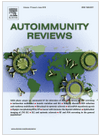 Drug-induced myopathy is among the most common causes of muscle disease. An association has recently been described between programmed death-1 (PD-1)/PD-1 ligand (PD-L1) inhibitors and immune-related adverse events (irAE) affecting the muscle. Here, the authors report the clinical and pathological findings of nine unrelated patients with PD-1 and PD-L1 inhibitors-associated myopathy.
Drug-induced myopathy is among the most common causes of muscle disease. An association has recently been described between programmed death-1 (PD-1)/PD-1 ligand (PD-L1) inhibitors and immune-related adverse events (irAE) affecting the muscle. Here, the authors report the clinical and pathological findings of nine unrelated patients with PD-1 and PD-L1 inhibitors-associated myopathy.
They retrospectively analyzed 317 muscle biopsies performed for diagnostic purposes from January 2017 to June 2019. Patients were attended in two tertiary centers and muscle biopsies were performed and analyzed by two myology experts. Muscle biopsies were frozen in cooled isopenthane, cryostat sectioned and stained. Immunohistochemistry studies were also performed as a routine procedure in our lab.
The researchers identified 9 patients receiving anti-PD-1 or PD-L1 inhibitors consulting for either muscle weakness, asthenia, myasthenic-like syndrome or other muscle related-symptoms, along with biopsy-proven inflammatory myopathy. One had concomitant myocarditis. In most of the cases muscle biopsy showed a marked phenomenon of necrosis, macrophagy and muscle regeneration with perivascular inflammatory infiltrates with a large component of macrophagic cells. A tendency to perifascicular atrophy was also noticed. The expression of MHC class I antigens predominated in the perifascicular zones. Raised muscle enzymes were detected in 7 patients.
A characteristic clinic-pathological pattern, including a myasthenia gravis-like syndrome plus myositis was found in patients receiving PD-1 and PD-1 L inhibitors. A large component of macrophages resembling granulomas seems to be the pathological hallmark of the syndrome. Further information is required to understand the wide spectrum of immune-related adverse events involving the muscle during or after treatment with anti-PD-1 inhibitors, but the pathological picture seems to be characteristic.
